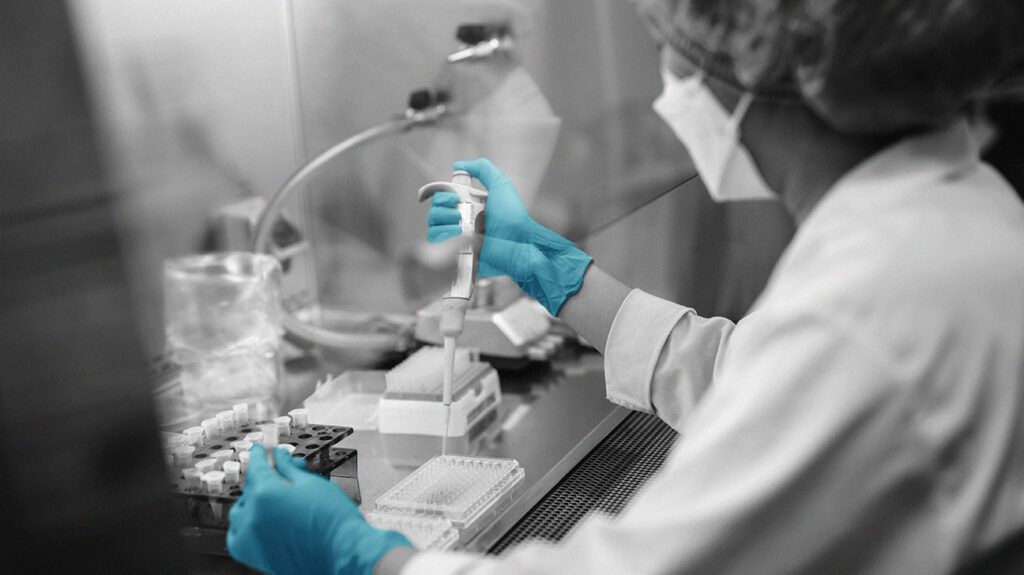Myotonic dystrophy is a condition that causes thinned muscles, decreased muscle tone, and muscle weakness. Over time, a person may lose their strength and have issues relaxing their muscles. The severity of symptoms and speed of progression varies.
There are two types of myotonic dystrophy: type 1 (DM1) and type 2 (DM2). It is an inherited condition, and someone only needs one copy of the atypical gene relating to the condition to develop symptoms.
Although there is no cure for myotonic dystrophy, a person may receive treatment for complications such as cataracts and diabetes.
Read on to learn more about myotonic dystrophy and its causes. This article also looks at symptoms, how doctors diagnose the condition, and more.

There are two types of myotonic dystrophy: DM1 and DM2, and different genetic mutations cause each type. These mutations affect the muscle structure, leading to weakness and altered muscle tone.
DM1
DM1, or Steinart disease, ranges in severity. There are
- congenital myotonic dystrophy, which can be present from birth
- mild myotonic dystrophy, which typically begins after age 40 years
- classic myotonic dystrophy, which typically begins when a person is in their 10s–30s
- childhood myotonic dystrophy, which typically begins from around the age of 10 years
Typically, DM1 affects muscles further away from the center of the body, such as the hands and feet.
DM2
DM2 typically affects muscles that are closer to the center of the body, such as the neck and elbows. It typically begins in adulthood, with a median age of 48 years.
A genetic mutation causes myotonic dystrophy. However, DM1 and DM2 are not due to the same genetic mutation. With DM1, the mutation affects the DMPK gene, while with DM2, the mutation is on the CNBP gene, or ZNF9 gene.
As myotonic dystrophy is autosomal dominant, a person only needs to inherit one mutated gene to develop symptoms. This means that if a biological parent has DM1 or DM2, there is a 50% risk their child will also inherit the condition.
The symptoms of myotonic dystrophy in DM1 and DM2 generally include:
- weakness in the neck, finger fingers, and hips
- sustained muscle contraction
- fatigue
- cardiac problems
- thyroid issues
- hormone dysfunction
- hearing impairments
- gastrointestinal issues
- problems with the immune system
DM1 can also include signs of intellectual disability, though this is
Myotonic dystrophy can also lead to conditions such as type 2 diabetes and cataracts.
DM2 has a milder progression than DM1. When a person has DM1, they
Progression is relatively slow for both types, but more negative outcomes in DM1 are more likely
- diabetes
- issues with blood pressure
- a need for walking support
- respiratory issues
- irregular heartbeat
A person’s doctor can provide more information about how their condition may progress.
When a person has symptoms of myotonic dystrophy, a doctor may first ask them questions about their symptoms and take a full medical history. As the condition is hereditary, they will typically also ask about their family medical history.
The doctor may then order various tests to assist with reaching an accurate diagnosis. The types of exams and tests a doctor will use
- A physical exam: This will involve checking for muscle wasting and weakness. It will also check a person’s reflexes and muscle tone.
- An electromyography (EMG): This measures electrical activity in the muscle.
- Genetic tests: A doctor can use genetic tests to screen for any alterations in the DMPK and CNBP genes.
There is
Treatments may include:
- walking aids to help with mobility
- medication for heart problems
- medications to help with muscle stiffness
- respiratory therapy for breathing problems
- diet and speech therapy for swallowing problems (dysphagia)
- physical therapy for support with exercises
- occupational therapy to help with maintaining independence
Myotonic dystrophy affects
In the United States, the condition affects
It is not possible to prevent myotonic dystrophy because it is an inherited condition. However, if a person receives treatment for their symptoms, this
Here are answers to common questions about myotonic dystrophy.
How long can a person live with myotonic dystrophy?
How long a person lives with myotonic dystrophy depends on the type and severity of the condition. If a person has mild DM1, the condition may not affect their life expectancy. With classic DM1, life expectancy is around
What is the age of onset for myotonic dystrophy?
People with DM2 typically begin to experience symptoms around
Those with classic DM1 may start experiencing signs and symptoms from when they are 10 to anytime in their 30s. Childhood myotonic dystrophy typically begins around the age of 10 years, while congenital myotonic dystrophy may be present from birth.
What is the most common cause of death in myotonic dystrophy?
The most common cause of death in myotonic dystrophy is respiratory failure, with cardiac complications being the second most common.
Myotonic dystrophy is the most common type of muscular dystrophy that begins in adulthood. It is an autosomal dominant condition, which means that people only need to inherit one gene relating to the condition to develop symptoms.
There are different types of myotonic dystrophy. DM2 tends to be milder than DM1. DM1 typically has more severe symptoms and can cause intellectual disabilities in some people.
There currently is no treatment for myotonic dystrophy, but treatments can help manage symptoms.
